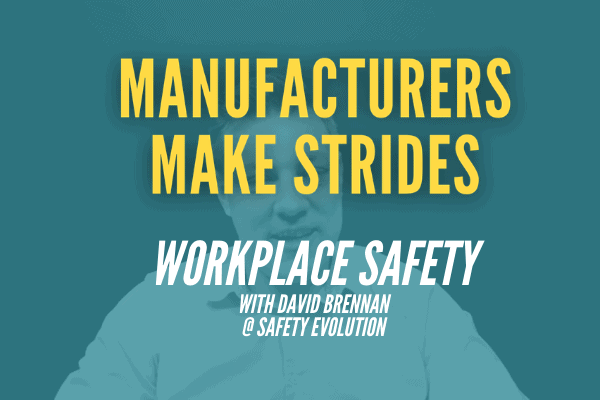Safety in the workplace is perhaps one of the most important parts of running a business – especially if it calls for staff to work on dangerous manufacturing equipment. Though workers are adults and should be responsible for their own safety, there are some crucial guidelines and requirements you as a business owner should make compulsory in the workplace.
Oftentimes, there’s a fairly extensive list of practices businesses don’t even know are mistakes. It’s not uncommon – we’re all human, after all. But because safety is such a big concern across all manufacturing industries, it’s important to keep track of these practices to ensure everything is accounted for.
So, how do you control the quality, traceability, and productivity in your manufacturing processes? Watch our podcast interview with CEO of Safety Evolution, David Brennan, to learn about common safety mistakes, how you can improve your practices, and which software solutions would work best for traceability.
What are the big challenges in setting up safety processes in the workplace?
I think the biggest challenges are in a paper-based system because of the time it takes to build out systems that work, as well as understanding how those systems need to work. Implementing them on a day to day basis is incredibly difficult because of the amount of administrative work. Also, the amount of money it costs to implement them can be a constraint for a lot of companies,
What would you like to see in workplace safety in five to ten years from now?
A change in the way that companies can actually look at health and safety. When you look at what’s going on in the world, the shifts in information and the way that data has become such a huge part of business, you quickly realise that companies that learn how to use their data, or gather the data that they really need are going to have a huge upper hand. We’re working very diligently to create data points that will allow us to use machine learning A.I. to create predictive capacity within our software. That will really help companies make those decisions and alert them when things are happening.
What techniques are there to ensure the workforce get on board with new safety practices?
- Educate our workforce:
- In my time as a safety professional, I’ve done a lot of work with educating our workforce. I think we oftentimes teach them this is how you have to do it, but we also have to make sure we teach them why.
- Tell them how important safety practices are:
How to take ownership of a hazard assessment is a great example, in that, this is it’s not about the company, it’s about you. This is your planning document, this is how you have to do your job and this is your tool. Tell them, we’re doing this so that you have a better way of doing your job. - Explain why it is important:
Explain to people why we need to do this, what is it going to do for them and How it will help somebody else.
Do you have any book recommendations?
I’m reading one called Atomic Habits by James Clear. It’s a really interesting book because it’s like a practical guide to creating habits. it has some very far-reaching implications and applications, teaching your team how to set their day up, how to create the habits, how to stack good habits on what they’re doing, so they set themselves up for success.
Get in touch with David
You can contact David at www.safetyevolution.com and book in a 15 – 20 minute chat with one of the team. They’re happy to look at what you’re doing and see if there is anything they can help you with.




